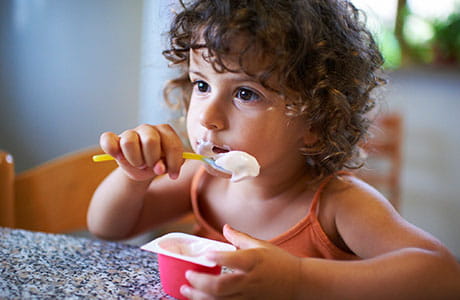5 things to consider when planning a Halloween costume
Costumes can be scary — and still safe. Help your child buy or create a Halloween costume that will make trick-or-treat even more fun.
Zombies can’t be their scariest if their makeup is itchy. Witches can’t fly their brooms if they can’t see. And it’s hard to say “trick-or-treat” if you have to do it between sneezes. So, when your child’s Halloween costume brings more tricks than treats, it can put a damper on their day. But with a little knowledge beforehand, you can help them find a costume and reach their maximum treat potential.
Halloween costume safety
No matter what your child plans to be for Halloween, a lot goes into finding the right costume. “When we’re thinking about kids’ Halloween costumes, we want to focus on their protection,” says Laurie Campfield, DO, pediatrician at Geisinger. “Things like costume length and visibility are important.”
Before you buy anything, keep these things in mind:
1. Think about color
Choose a brightly colored or reflective costume to increase your child’s visibility. If their costume is a darker color, add reflective tape or an LED light. “These small things will make it easier for others to see your child when they’re walking around,” Dr. Campfield says.
2. Check the label
When browsing costumes and accessories, checking for safety warnings first is a good idea. To choose a safer costume, look for labels that say “flame resistant.” It’s also good to pick costumes made from synthetic fabrics like polyester. To keep costumes less itchy, stay away from fabrics like wool. “Be mindful, also, of accessories that contain nickel or latex, which may irritate skin,” Dr. Campfield adds.
3. Take caution with masks
Masks are a popular staple of many Halloween costumes. And while a mask is a fun disguise, it can also obscure your child’s vision. “If your child’s costume includes a mask, consider having them take it off while walking around and putting it back on only when they’re collecting treats,” suggests Dr. Campfield. If you’re worried about their ability to see, skip the mask altogether in favor of a hat or makeup.
4. Test face paint first
Halloween makeup is an excellent way to keep your child’s vision clear (and create a dramatic effect). But not all makeup is created equal. Costume makeup and prosthetics can contain ingredients that cause reactions and irritate skin. Before you apply makeup to your child’s face, test it on your hand or arm. If you have any irritation, Dr. Campfield recommends throwing the makeup away and trying another brand or type, like theater makeup.
5. Tread lightly with colored contacts
Colored contacts can add a dramatic look to any costume. But these novelty lenses can create drama in other ways, too. Since novelty contacts aren’t sized to your actual eye, they might not fit properly, which can irritate your child’s eyes. And hidden ingredients can lead to allergic reactions. If your child has their heart set on decorative lenses, consider visiting an eye care professional to discuss their options.
Do a trial run before Halloween
To avoid any surprises on the big day, have your child try out their costume beforehand. Besides being comfortable, they’ll want a highly visible costume they can easily walk in. Check for anything that drags or hangs and could be a potential tripping hazard. And if anything makes them itchy or uncomfortable, consider adding a base layer underneath to avoid direct contact with their skin.
Try out any accessories, too, like makeup, hair spray or masks.
Consider giving yourself a few extra days in case adjustments are needed. This gives you time to head back to the costume shop or find something online.
Once your child finds their costume, they can focus on what really matters — getting as many treats as possible.
Next steps:
6 alternatives to going door-to-door this Halloween
Find a pediatrician near you
Meet Laurie Campfield, DO





